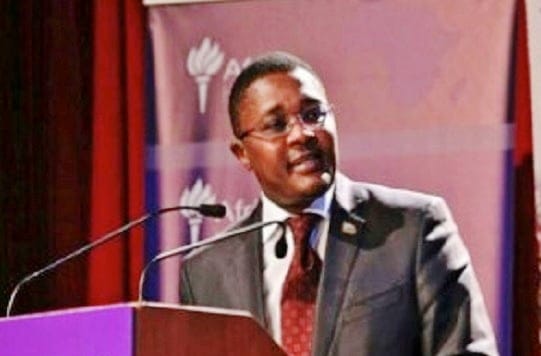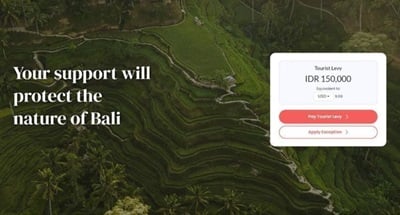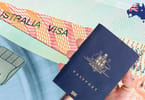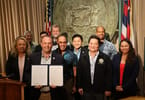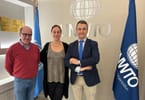The term “sustainability” is a frequently (over)used term these days. Like many words that rise from real meaning to become rhetoric, the term has turned into an impressive inclusion in statements, speeches, strategies.
In 2017, however, the United Nations’ International Year of Sustainable Tourism for Development (IY2017) seeks to return the word to its roots. Sustainability goes far beyond “green,” reaching into the economic, social, cultural, and, at times, even spiritual wellbeing of people and places across the globe.
In Tourism, central to this is strengthening essential structures and systems that keep the going going, keeping the growing growing. For the good of the sector, for the good of the environment, for the good of all.
But what happens when the structures and systems come crashing down, simply because Mother Nature decided here and now is where and when she is going to have a tantrum? How does one invest in sustainability – economically and philosophically – when what has and was expected to be here forever is simply gone?
Rebuilding hard infrastructure – homes, hospitals, hotels, temples, transport systems, telecommunications, is one thing. Building back soft infrastructure – history, heritage, homes, and hope, is quite another.
Such was the test put before the people of Nepal when the terrifying shaking of the Earth in April 2015 brought the people of the country to their knees. Temples and places of pilgrimage, from the candlelit halls of Kathmandu to the peaks of the Himalayas, turned to streams of rubble rushing down. The world watched as the temple walls and trekking walkways disappeared, taking with them thousands of lives and livelihoods. Nepal, a nation known as the rooftop of the world, had had its protective cover pulled back, leaving its people exposed, wounded, vulnerable.
Immediately the Tourism sector was called out as a severely hit side of the nation’s economy. Something had to be done. Sustainable tourism structures and systems were put into direct focus – could they sustain the trauma of an earthquake testing every aspect of a nation’s strength of economy? Identity? Society?
STRENGTH OF SPIRIT AT THE CENTER OF SUSTAINABILITY
“When did the earthquake happen… and where were you?”
The day the earthquake hit Nepal – April 25, 2015 – is a day each and every citizen of Nepal now has inscribed in his or her memory. Their recall of the date and time is exactly the same: just before noon, 11:56 am, to be exact.
Earthquake strength: 7.8
Intensity: IX (deemed “Violent”)
Epicenter: between the capital of Kathmandu and Mt. Everest
Total damage: est. US$10 billion, roughly 50% of Nepal’s GDP
Souls lost: est. 8,857, with 21,952 injured, 3.5 million left homeless
Aftershocks: Many, and merciless
Consistent is the quake commentary. So too is their immediate chaser statement: “Thank God it was a Saturday, or so many school children would have died.”
The horror of the moment still haunts. As shared by tour guide Pravin of Dharma Adventures, an exceptional destination management company operating in Nepal, Tibet, and Bhutan since 1991 through the visionary leadership of its Founder, Pawan Tuladhar:
“We were at the airport, about to fly out with a group of tourists. Suddenly the ground just started shaking. It felt like it would never stop. We all ran onto the runway in case the airport came down. Even from the airport you could see the dust of the city rising. Everywhere, there was so much rubble…”
For a nation such as Nepal, one known for its deeply personal travel offerings that make it possible for travelers to discover not only the destination, but themselves, bringing the tourism sector back to life and livelihoods was critical.
But it needed to be done in a way that was thoughtful, and purposeful, not just “sustainable” in its traditional definition.
For a nation with deep historical, traditional, and spiritual roots, building back better for the future meant reinforcing past skills and sensibilities. Not to mention the spirit of community.
Pravin, he himself actively involved in building temporary homes with his friends for those left destitute in the earthquake’s immediate aftermath, saw the time of national recovery one of national reigniting of the spirit of Nepalese people.
“There was nothing, people had nowhere to sleep. And even if they did, they were frightened to be inside as their homes. So, hundreds of people just slept in the square. It became one family. Sharing food. Sharing whatever people had. Even if you don’t have anything, just offer a glass of water. You are poor when you do not offer anything.”
Looking back at that time, and thinking of what the earthquake gave Nepal, not just took away, Pravin immediately speaks of how traditional artisans became valued one more, their skills needed to bring back to life ancient structures needing restoration, ancient skills at risk of being buried in the past if not put to use in the present, for the future.
“Nature has given us so much, our ancestors have given us so much. You really don’t need to do anything – just preserve. I love to see those workers working, rebuilding temples. See how they are matching perfectly the old carvings. Those sites dated back to the 14th Century, 15th Century, hundreds of years. In the same way, they are doing it now.”
Interestingly, in many cases where historical photographs did not exist to be able to guide architects, engineers, and artisans in restoration efforts (greatly and gratefully supported by UNESCO), it was tourist photographs that were able to help piece things together.
WHAT WAS ONCE RUBBLE, TOURISM RESTORES
In addition to tapping into the heart of Nepalese culture, inspiring investment into jobs and skills development focused on the nation’s precious, priceless craftsmanship, the trauma of the tremors went directly to the heart of the global tourism community – the world’s travelers reprioritizing Nepal.
As a result, once earthquake-hit areas across the country from temple squares to Everest’s summit were deemed safe for revisitation, Nepal began to see the return of travelers, international tourism arrivals jumping over 24% in 2016 versus 2015, crossing the 700,000 arrivals line, employing almost 1 million.
This surge in demand fueled not just the nation’s economy, but its spirit, as Nepalese people were able to focus on being productive, a sense of purpose, pride, and possibility rising from the rubble.
For the Nepalese people, the definition of “sustainability” expanded to include sustainability of community, artistry, identity.
“Don’t send money, just come here. People traveling affects so many lives. People don’t want money for free. No one wants to be pitied.”
For Pravin, the importance of Tourism to his country is clear:
“You know what religions we have in Nepal. Number one is Hinduism, number two is Buddhism. And the third most important religion is Tourism.”
eTN is a partner with the CNN Task Group.
WHAT TO TAKE AWAY FROM THIS ARTICLE:
- Such was the test put before the people of Nepal when the terrifying shaking of the Earth in April 2015 brought the people of the country to their knees.
- Pravin, he himself actively involved in building temporary homes with his friends for those left destitute in the earthquake's immediate aftermath, saw the time of national recovery one of national reigniting of the spirit of Nepalese people.
- For a nation such as Nepal, one known for its deeply personal travel offerings that make it possible for travelers to discover not only the destination, but themselves, bringing the tourism sector back to life and livelihoods was critical.










